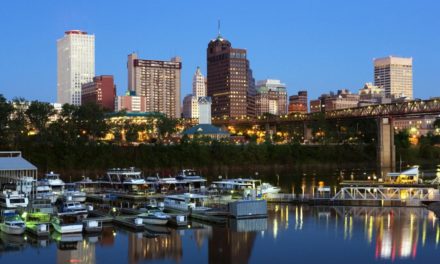From Atlantic Cities:
Numerous theories have been offered recently not just for Mitt Romney’s stunning defeat by Barack Obama, but for the apparent decline of the Republican electoral coalition. Many emphasize the diverse demographic coalition — of women, ethnic minorities, and gays — that came together behind the president, while others stress the well-executed ground game and state-of-the-art analytic techniques used by the Obama campaign.
America’s increasingly diverse demographic makeup may well have created a long-term advantage for Democrats. Republicans had better change their stripes and address these new realities if they want to be relevant and competitive again.
As our own Sommer Mathis noted the morning after the election, county-level election results show that cities are very, very blue. “The math of assuming cities will go to Democrats and thus not bothering to craft a message aimed at the people who live there is just a losing game going forward for Republicans,” she wrote. “And it’s only going to get worse as urban populations increase and become more concentrated.” After examining a series of electoral maps, Emily Badger also concluded that electoral power is “concentrated in those blue-black patches, one of which strings all the way from southern Connecticut to Washington, D.C. These are the places where people live densely together, where they require policies and an ideology that Republicans lately have not offered.”
We’re not the only ones that have pointed to the increasingly important electoral role of cities. In their prescient 2004 book The Emerging Democratic Majority, John Judis and Ruy Teixeira argued that a new Democratic majority would be centered in both an increasingly diverse electorate and the new knowledge- and service-based economies of what they dubbed urban “ideopolises.” Several years ago, Tom Davis, the former Republican congressman from Northern Virginia, speculated that Republicans were becoming more vulnerable in urban centers because, as he put it, economic development works, meaning as communities become more developed they attract more highly educated and cosmopolitan populations that tend to vote Democratic. National Journal’s Ronald Brownstein has shown how creative class counties have trended increasingly Democratic over the past couple of decades.
As Dave Troy puts it, the key factor in this year’s election is even simpler — it’s all about density. Troy, a founder of several software companies, recently plotted the county-level election results against population density (see the graph below). His conclusion was striking: “98% of the 50 most dense counties voted Obama. 98% of the 50 least dense counties voted for Romney.” Chart courtesy of “Dave Troy: Fueled by Randomness“
Chart courtesy of “Dave Troy: Fueled by Randomness“
The graph shows a clear “crossover point” in terms of density where counties turn blue and Democratic, as he explains:
At about 800 people per square mile, people switch from voting primarily Republican to voting primarily Democratic. Put another way, below 800 people per square mile, there is a 66% chance that you voted Republican. Above 800 people per square mile, there is a 66% chance that you voted Democrat.
 Chart courtesy of “Dave Troy: Fueled by Randomness“
Chart courtesy of “Dave Troy: Fueled by Randomness“
In a second graph (above), he added red states and blue states, as well as key cities, to his analysis. Based on this he notes two key facts. First, red states have very few cities, and second, the ones they do have vote overwhelmingly for Democrats. He points out that most big cities in red states voted blue. The two exceptions — Salt Lake City and Oklahoma City — had low densities, with only about 1,000 people per square mile, or less than suburban Maryland. He points out that red states seem to “simply run out of population at about 2,000 people per square mile.”
Given the logic of economic development and urbanization, he argues that “red states are just underdeveloped blue states,” noting that: “As cities continue to grow in red states, those cities will become more blue, and ultimately, those states will become more purple, and then blue.”
The Republicans are becoming a party of anti-progress, which is ultimately what is costing them so dearly. The issue cuts far deeper than identity politics and turns on ideology and policy positions which are “simply not compatible with the global urban future. If that’s the case, an Hispanic candidate running on the same old Republican platform will simply not resonate.”
The crux of the Republican problem is not the changing ethnic and demographic makeup of America, but their being at odds with the very logic of urbanism and economic development.




